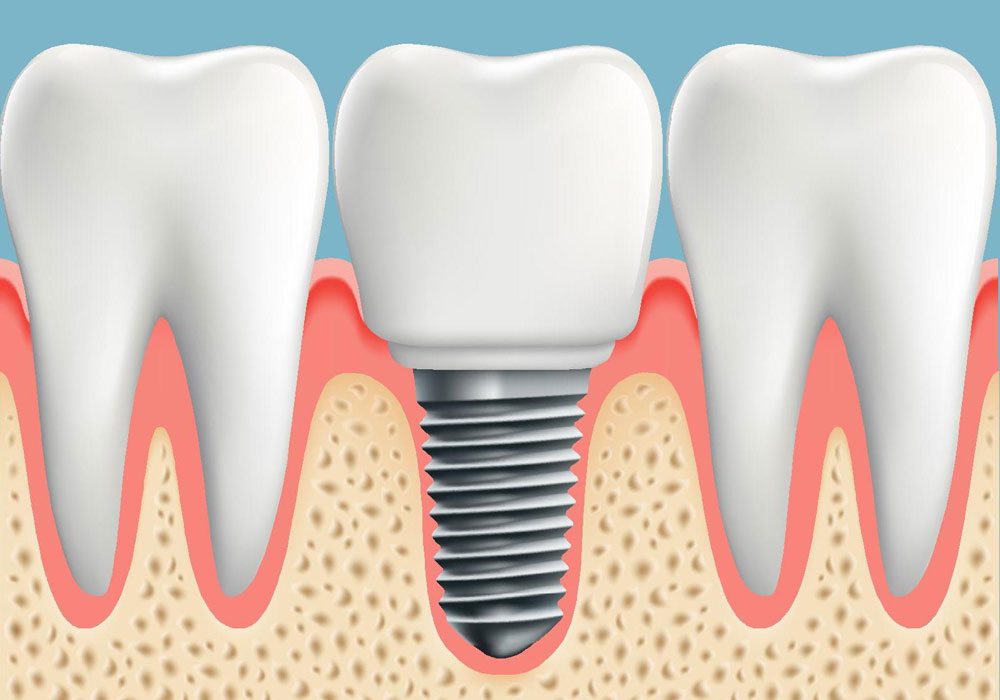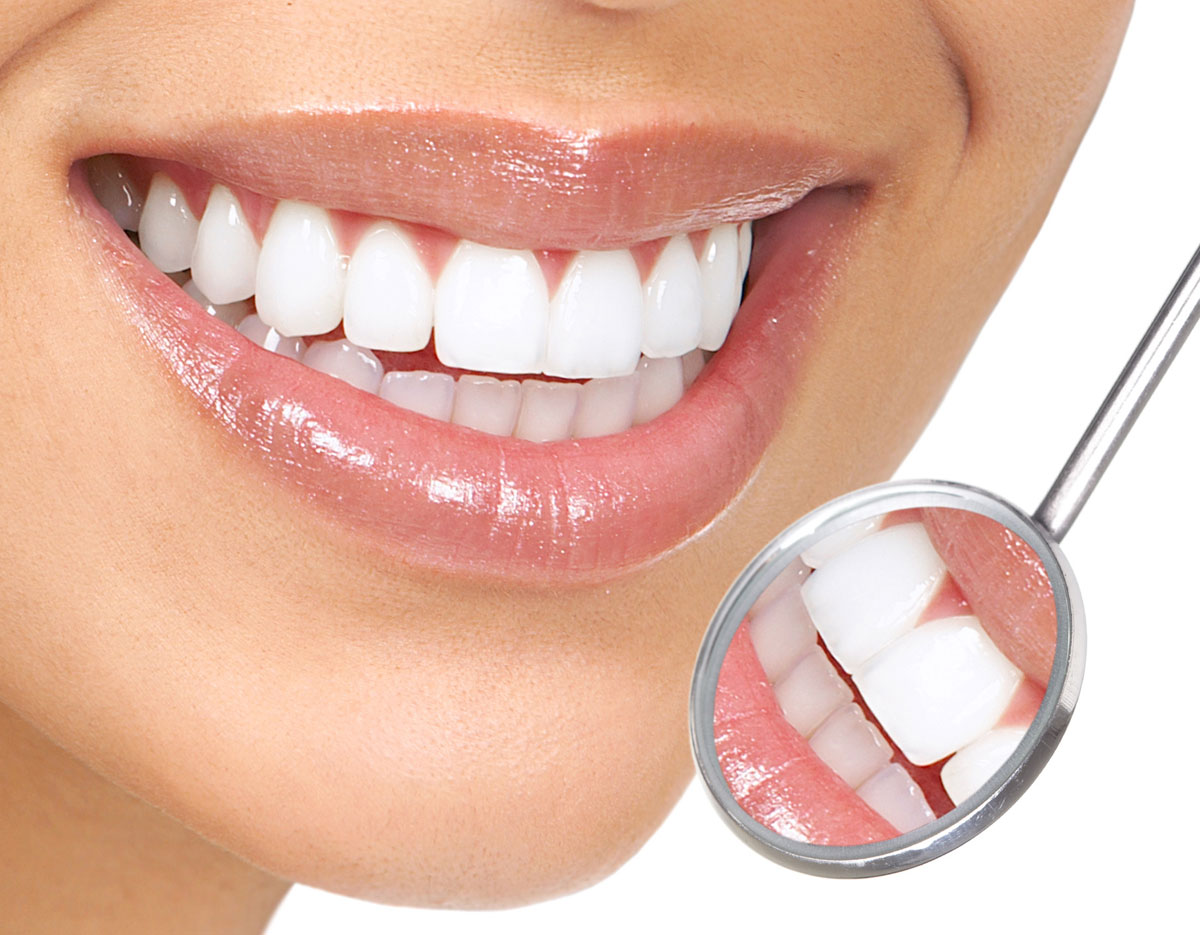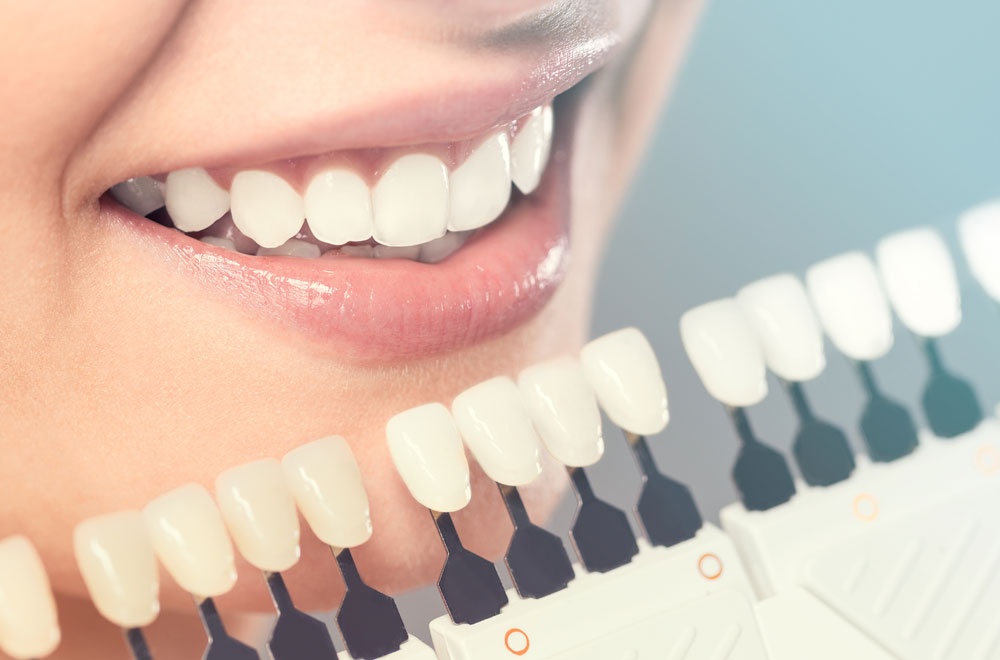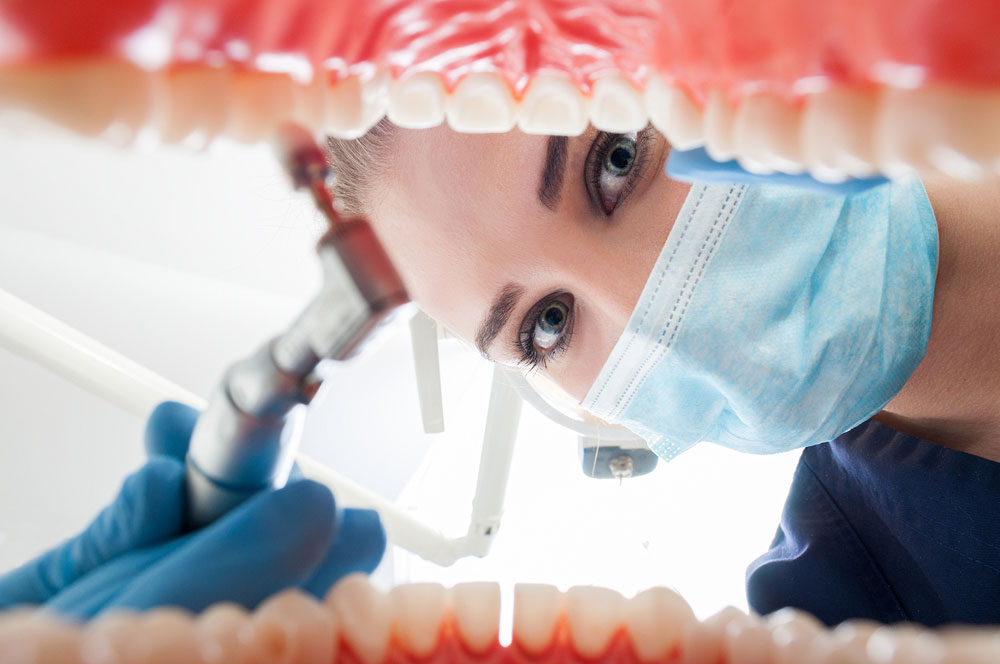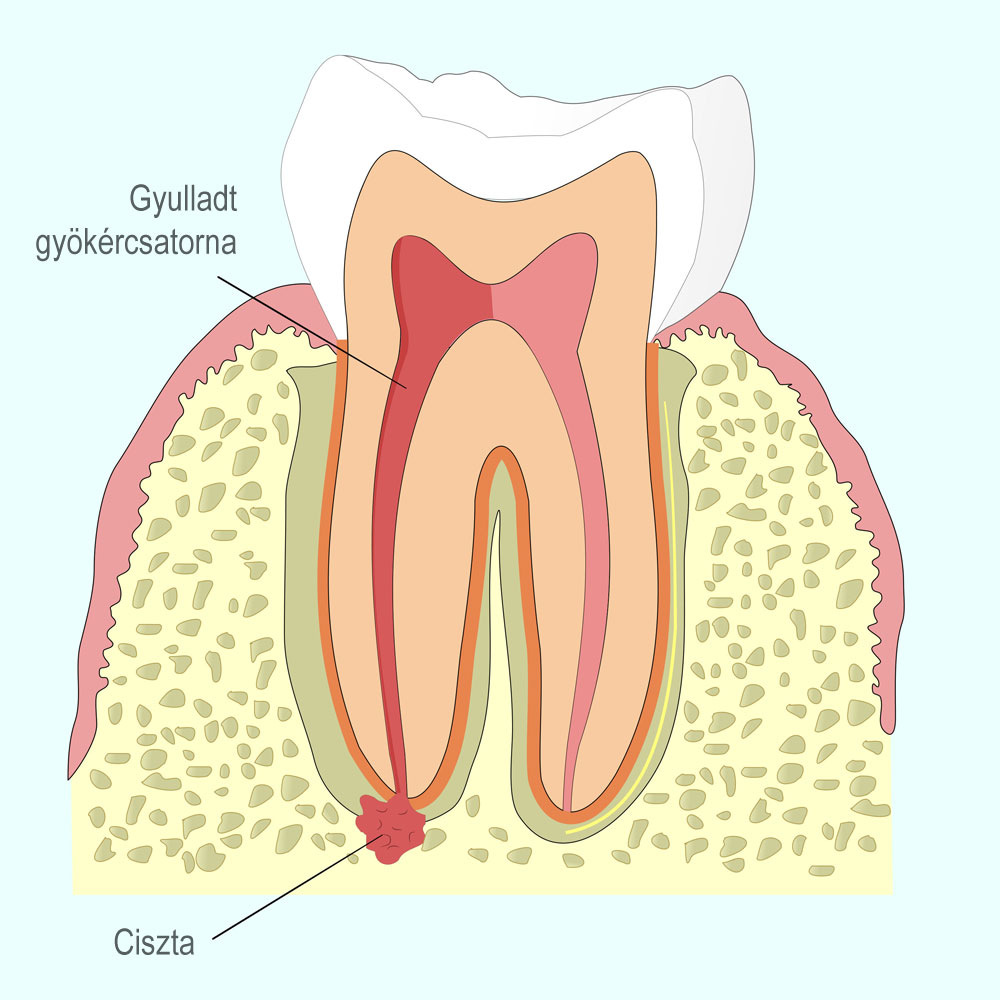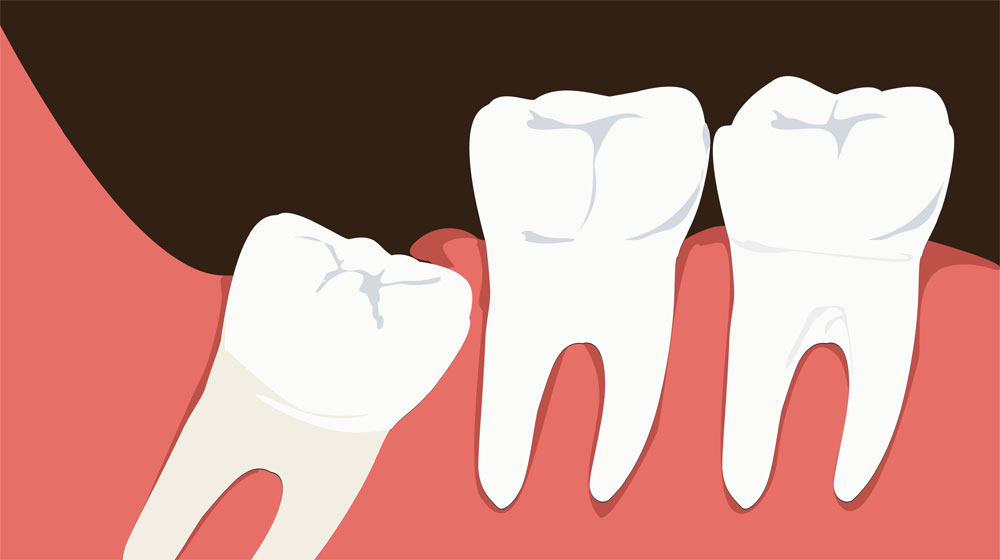Dental, aesthetic and dental implantations
Implantation
In the course of our lives teeth could be lost by decay, gum recession or accident. Front teeth are replaced mostly due to aesthetics, while molar teeth are replaced to restore the chewing function.
With the “traditional” method, these gaps are filled with bridges, where the adjoining healthy teeth have to be prepared also. In today’s modern dentistry the most successful substitutes of missing teeth are dental implants.
This can be imagined as an “artificial root” that is inserted into the bone. Dental implants can be a base of a crown, bridge or denture. The “artificial roots” can be placed in the upper and lower jaw as well.
Ossification of the upper jaw is approx. 4 months, while the lower jaw approx. 2-3 months, but this period depends mostly on the patient’s bone quality.
More information: All about implants »
Sinus lifting
Sinus lifting is required when the height of the bone is note enough in the upper jaw (premolar, molar area), for the bone implantation. In this case, during the surgery the mucosa of he maxillary sinus can be raised with graft material.
Sinus lift is a great solution for those who has bone loss in the upper jaw area or dental implantation cannot take place because the sinuses are too close to the jaw. It usually advised to have for those patients who has not got enough bone in the upper jaw, when teeth are missing for a long time or the maxillary sinus is too close to the jaw for dental implants to be placed. To be a candidate for dental implants, a patient must have sufficient bone in the maxillary and mandibular alveoli for structural posts. Unfortunately, after a prolonged period of being edentulous, the alveolar ridge that once supported the teeth becomes atrophic and sufficient bone may not be present for implants. In these cases the aim is to increase bone quantity. During the procedure the doctor cuts the gum tissue near premolars or molars. A small, oval window is opened in the bone exposed.
To increase the amount of bone in the maxilla, the sinus lift procedure, or subantral augmentation, has been developed. This surgery adds bone to your upper jaw in the area of your molars and premolars to raise them. The procedure involves placing bone-graft material in the maxillary sinus to increase the height and width of the alveolus. The incision is stitched and closed. A sinus lift usually is done by an oral and maxillofacial surgeon or a periodontist.
There are two possible treatment types, either performing the dental implantation together with sinus lift, in this case the healing time is 8 months or first the sinus lift is done and 6 months later the dental implantation will take place which again has to heal for another 4 months. The type of treatment is decided by the specialist after personal consultation.
You should expect some swelling and soreness following your sinus surgery. These will usually abate after a few days and you should only need non-prescription pain relief.
During this time you will need to avoid sneezing and blowing your nose which could dislodge the graft material.
Periodontal Disease Treatment
Gingivitis can be defined as the bacterial inflammation of the gums. This infection can be spread to the teeth an can start an irreversible process.
The key is prevention, but if the inflammation spreads to the gum and bone structure, with pocket-reducing surgery we can reach a better adhesion of the gum to the bone.
Our mouths are full of bacteria. These bacteria, along with mucus and food particles constantly form a sticky, colorless coating on teeth known as “plaque”. Brushing and flossing between teeth helps get rid of plaque however, plaque that is not removed hardens to form ‘tartar’ that ordinary brushing won’t remove.
The longer plaque and tartar are left on teeth the more harmful they become. Only professional cleaning by a dentist can remove tartar.
Most people suffer from some form of gum disease with signs not showing until they are in their 30’s or 40’s. Periodontal diseases range from simple gum inflammation to serious disease that results in irreversible damage to the soft tissue and bone that support the teeth; it is the major cause of tooth loss in adults.
The first line of defense against Periodontal disease is prevention. This necessitates a good daily oral hygiene routine at home. Brushing at least twice a day and cleaning between teeth once a day with floss helps prevent plaque and bacteria from accumulating.
In order to make an accurate assessment of your needs, an Initial Consultation is first necessary. Depending on how far the diseases have progressed, treatment can vary. Following Consultation you would be given a detailed treatment plan outlining the options available to you, the exact cost, number of visits and the time scale which may depend upon any required healing time.
The number of appointments required depends on the area to be treated with generally one appointment a day, per quadrant.
CLOSED CURETTAGE PERIODONTAL SURGERY
This treatment consists of eliminating the tartar and infection causing bacteria and irritants that have built up on and just below the gum line. There is no need to open the gum in this treatment.
OPEN CURETTAGE PERIODONTAL SURGERY
This treatment also removes built up tartar and infectious bacteria but if they are found to be deeper, the gum needs to be opened or cut to allow us to remove the tartar and then arrange the gum tissue into a shape that will be easier to keep clean.
Aesthetic dentistry
In the course of our lives teeth could be lost by decay, gum recession or accident. Front teeth are replaced mostly due to aesthetics, while molar teeth are replaced to restore the chewing function.
The missing teeth can be replaced by the preparation of the adjoining teeth. This we call as fixed replacements. These bridges are placed on metal or zirconium oxide frameworks. The ceramic is burned on these frameworks making the prosthetic the same color as the patient’s teeth was prior to their preparation.
It is an important dental hygienic treatment, which is necessary before future fillings and tooth replacements as well. Nowadays, calculus removal is nearly pain-free, thanks to an ultra-sound machine. It is recommended every six months, in order to preserve our dental health.
When getting aesthetic dental work done, nowadays people rather choose light-curing white porcelain fillings, as opposed to the old amalgam fillings, which are dangerous to health. These top-quality composite fillings are used not only in case of frontal, visible teeth but also the rear occlusal surfaces too: they do not deteriorate or get discoloured, and can take pressure well, while their shrinkage is minimal. Large tooth cavities, which could previously only be treated by tooth extraction, can nowadays be cured by inlays; in these cases, the cavity is cleaned and disinfected, and a plastic or porcelain plug is inserted. The tooth, which is saved this way, adopts better to temperature changes and chewing pressure, and in the majority of cases, develops no further caries underneath the filling.
A dental crown is a tooth-shaped “cap” that is placed over a tooth – covering the tooth to restore its shape and size, strength, and/or to improve its appearance. The crowns, when cemented into place, fully encase the entire visible portion of a tooth that lies at and above the gum line.
A dental bridge is a device used to fill the space where a tooth has fallen out or been removed. A typical dental bridge consists of a pontic (a filler tooth) that is attached to two surrounding abutments (dental crowns). Once complete, this dental bridge structure is bonded into the mouth. Without the use of a dental bridge, spaces in the mouth from missing teeth can cause multiple teeth to shift, lead to occlusion (biting) and/or jaw problems and spur periodontal disease. Dental bridges safeguard the integrity of existing teeth and help maintain a healthy, vibrant smile.
Dental bridges usually require three trips to the dentist’s office. During the initial visit, the surrounding teeth are numbed with a local anaesthetic. The dentist prepares the surrounding teeth by cleaning any plaque or decay that remains and reducing them so that the dental crowns can be fitted. The dentist makes a mold of the teeth and sends it off to a dental lab, where the customized impression is prepared. The customized mold takes one to two weeks to return to the office. In the interim, patients are fitted with a temporary dental bridge constructed of acrylic resin. When the patient returns to the dental office, the dentist removes the temporary dental bridge and replaces it with the permanent one. The dentist then adjusts the dental bridge for the proper bite and fit, and the dental bridge is permanently bonded into the mouth.
There are several different types of dental bridges. The first is a fixed dental bridge, which consists of a filler tooth (a pontic) that is attached to two dental crowns. The dental crowns fit over the existing teeth to hold the dental bridge in place. The fixed dental bridge is the most popular bridge.
Another dental bridge design is a composite bond, known as a “Maryland” dental bridge. This type of dental bridge is commonly used to replace the front teeth. The pontic is attached to metal bands that are bonded to the abutment teeth, and the metal bands are hidden with a white-coloured composite resin.
A cantilever dental bridge is often used when there are teeth on only one side of the span. A typical 3 unit cantilever dental bridge consists of two abutment dental crowns that are positioned next to each other on the same side of the missing tooth space. The pontic is then connected to the two dental crowns, which extend into the missing tooth space.
If the missing tooth space has no surrounding teeth, the dentist may decide a dental implant is the most appropriate choice. When a series of teeth are missing, the dentist may suggest a partial denture as the most effective way to maintain the structure of the jawbone.
When a tooth is cracked, decayed, or damaged, a dental crown may need to be fitted onto the tooth.
During your first visit, the dentist will numb the tooth to be crowned and remove the decay in or around it. The tooth is then resculpted to provide an easy fit for the dental crown. This is a painless procedure that is performed in the dentist’s chair.
An impression of your teeth is then taken and sent to the dental lab where permanent, custom-made dental crowns are created (this usually takes one to two weeks). During this interim period, temporary dental crowns made of an acrylic resin are fitted onto the teeth.
On your next visit, on the resculpted tooth the dentist makes a fitting test with the sample crown, which has been prepared upon the impression that was taken earlier. This fitting is necessary to make sure that the dental crown has the proper look and fit.
On your last visit, the dentist removes the temporary dental crown and fits the permanent dental crown onto the tooth. After making sure that the dental crown fits perfectly, he or she cements the crown into place.
The proper dental hygiene for normal teeth should be applied to any new dental crown. Daily brushing and flossing will help to keep the teeth, gums, and crown free from the bacteria that can cause gum disease. Chewing on hard foods such as ice or pistachios should be avoided because over time, they can cause dental crowns to crack or break. Given proper care, crowns can last several decades.
The other, probably most spectacular aesthetic dental treatment is tooth whitening. It can be performed after calculus removal and other preparations, and it whitens the surface of the tooth by two or three shades of white. There are quite a few techniques used for this treatment, the common thing in these treatments is that the active substance penetrates the inner layer of the tooth, and dissolves colouring materials such as cigarette smoke, tea, coffee and red wine. Following the treatment, the patient gets a younger look and healthy, white teeth. Tooth whitening at home is just as popular: in this case, a plastic rail and whitening substance are used, and results can be achieved in one or two weeks.
Tooth preservation treatments
Fillings
The most common cause of losing a tooth results from carries. These days, the majority of filling related work comprises tooth colour procedures. The most often used compounds are composite materials and glass ionomers. We can remove silver (amalgam) fillings and replace them with white, tooth coloured fillings.
Silver mercury fillings not only look unsightly but can actually be harmful to your teeth. They expand and contract in response to heat and cold weakening the tooth they were meant to protect. This can also induce the decay process to begin under the filling and commonly goes unnoticed until it is too late.
The compound material of the inlay can be plastic, ceramic, metal (especially Gold) based. It is prepared by the technician after the initial doctor’s examination and report as advised. These days with the availability of new technologies and methods more people are able to choose to replace their silver mercury fillings with metal-free composite fillings or porcelain inlays and onlays.
Dental fillings are done in our dentistry after a consultation. The dentist will numb the area around the tooth to be worked on with a local anesthetic. Next, a drill, air abrasion instrument or laser will be used to remove the decayed area. The choice of instrument depends on the individual dentist’s comfort level, training, and investment in the particular piece of equipment as well as location and extent of the decay.
Next step, our dentist will probe or test the area during the decay removal process to determine if all the decay has been removed. Once the decay has been removed, the dentist will prepare the space for the filling by cleaning the cavity of bacteria and debris. If the decay is near the root, the dentist may first put in a liner made of glass ionomer, composite resin, or other material to protect the nerve. Generally, after the filling is in, our dentist will finish and polish it.
Several additional steps are required for tooth-colored fillings and are as follows. After our dentist has removed the decay and cleaned the area, the tooth-colored material is applied in layers. after that a special light that “cures” or hardens each layer is applied. When the multilayering process is completed, the dentist will shape the composite material to the desired result, trim off any excess material and polish the final restoration. If your satisfied with the work our dentist had done to your tooth, the treatment is completed.
Root canal treatment
Root canal treatment, also known as endodontic treatment, is the process of removing infected, injured or dead pulp from your tooth. The space inside the hard layers of each tooth is called the root canal system. This system is filled with soft dental pulp made up of nerves and blood vessels that help your tooth grow and develop.
Root canal therapy refers to the treatment of the inner aspects of a tooth, specifically that area inside a tooth originally occupied by the tooth’s “pulp tissue”. The process of root canal treatment first removes (as thoroughly as possible) bacteria, nerve tissue, the organic debris left over from the breakdown of nerve tissue, and bacterial toxins out from within the inner aspects of a tooth.
All of these items either are or will produce the tissue irritants that can cause your body to activate an inflammation reaction. Subsequently, once this space has been cleaned root canal treatment involves filling in and sealing off the interior of the tooth. This is done as a means of minimising the possibility that bacteria will be able to re-colonize the inner aspects of the tooth or that the interior of the tooth can fill in with tissue fluid that could become stagnant and subsequently break down. (Either of these situations could produce a state of persistent inflammation in the bone that surrounds the tooth’s root.) The seal also contains and encapsulates any debris that could not be fully removed during the cleaning aspect of the root canal treatment process so that it cannot leak out and trigger an inflammation reaction.
After a root canal treatment, your tooth has to be restored (fixed) to look, feel and work as much like a natural tooth as possible. If an endodontist performed your root canal treatment, he or she will fill the opening of the tooth with a temporary filling and send you back to your dentist or prosthodontist for tooth restoration.
A prosthodontist is a dental specialist who restores and replaces teeth using crowns, bridges, dentures and implants. Your dentist or specialist may use a permanent filling or a crown to restore your tooth. The choice of restoration will depend on the strength of the part of the tooth that’s left. A back tooth will likely need a crown because chewing puts a great deal of force on back teeth. If there is not enough of the tooth left, posts may be used to help support the crown.
Dental Surgery
Root tip resection
Root tip resection or root tip amputation means the the surgical removal of the inflamed apex or apical portion of a root. Dental caries can spread over from the hard dental tissue (enamel, dentine) to the pulp. This is curable by root canal therapy, however if the process is in an advanced stage, a cyst can appear on the root tip. This can be remedied only by surgery after the root canal treatment.
In some cases, the infection is caused by the poorly performed root canal treatment and the root filling has to be replaced. When this is not feasible (i.e. the infection persists or it is a post crown) or the infected area is not healing after the root filling replacement, we are also performing resection.
Wisdom teeth removal
Wisdom teeth usually appear around the age of 18. Prior to this, the wisdom teeth are covered with bone. Removal of wisdom teeth can be justified in different cases.
1. Prior to eruption:
A cyst can formatted on the bone.
Already at this stage the tooth can cause orthodontic problems.
2. During eruption (most common case):
Pocket may form between the teeth and gums.
Can also press the neighboring tooth which can only be recovered with orthodontic appliance.
3. After eruption:
Because of its location cleaning of the wisdom teeth is more difficult, so decay can appear on it.
We hope to welcome you as our patient in the near future
Our aim was not only to provide the best technical and professional background, but also to create a pleasant atmosphere.
You never have to be waiting for treatments
We welcome our patients after pre-arranged appointment to shorten the often long and inconvenient waiting time.

Book an appointment
If you wish to book an appointment click here!
ZSUZSANNA Bóné

